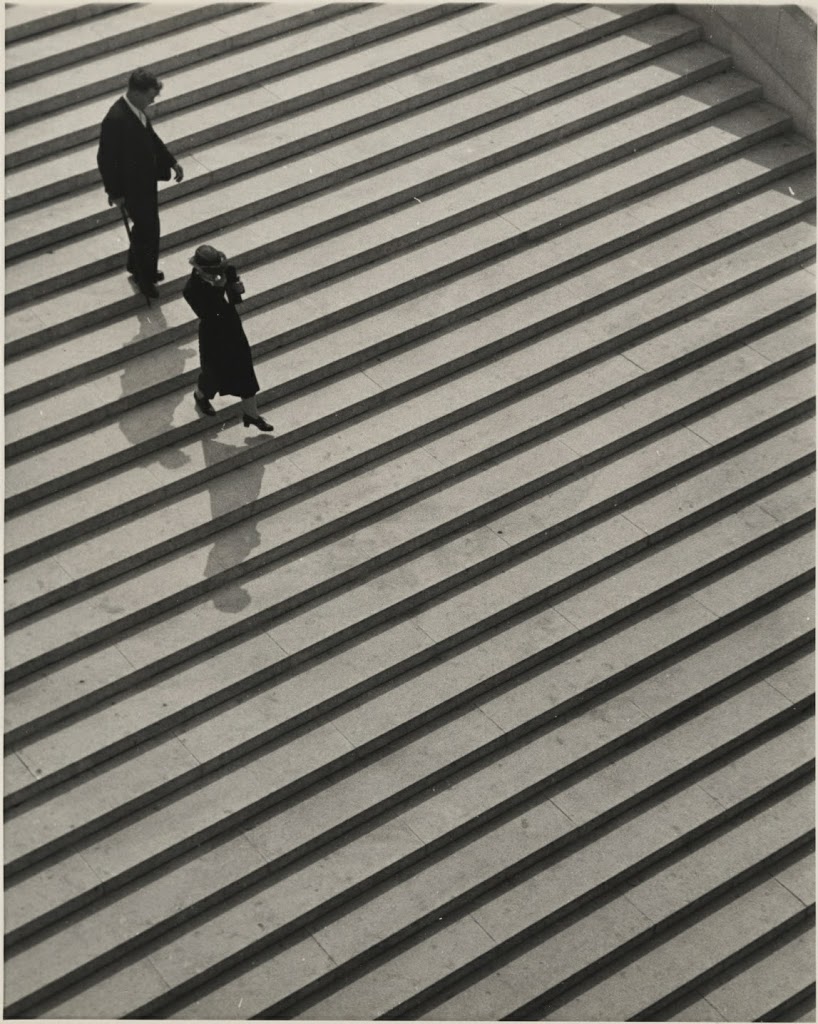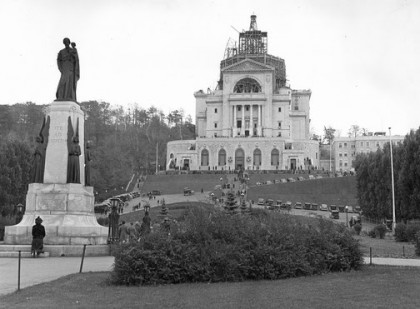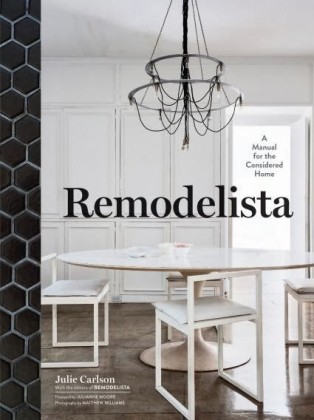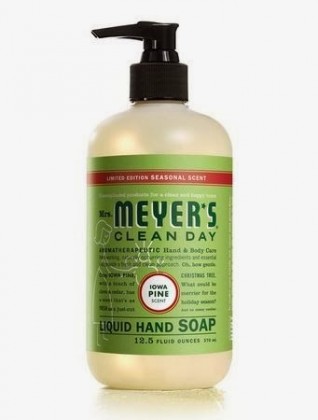 |
People walking down stairs, Exposition Internationale des Arts et Techniques dans la Vie Moderne, 1937.
Photograph F. S. Lincoln.
Fay S. Lincoln Photograph collection, 1920-1968, HCLA 1628, Special Collections Library, Pennsylvania State University. |
As I was writing our recent post on Maynard L. Parker, I couldn’t help but think about F.S. Lincoln (1894-1976), another great American architectural photographer of the same era. Based in Manhattan, Lincoln extensively documented the work of some of the most notable New York architects and designers of the time including McKim, Mead & White, Eugene Schoen, Ely Jacques Kahn, Joseph Aronson and Russel Wright, among numerous others. His work appeared in a wide range of shelter magazines such as Architectural Forum, Architectural Record and House & Garden. He also captured the two New York World’s Fairs and many of the international expositions in Europe, and received large commissions to photograph Colonial Williamsburg and antebellum architecture in the deep south. My favorite F. S. Lincoln photographs are always very distinct, very orderly black and white images of the some of the finest American and European modern design, architecture and interiors.

I recently came across a most fantastic book — Maynard L. Parker: Modern Photography and the American Dream. Published in 2012 by Yale University Press, it is a beauty. I must admit, I had never heard of Maynard L. Parker (1900-1976), one of this country’s most prolific and I would also say influential commercial architectural and design photographers of the twentieth century. From the 1930s through the 1960s, Los Angeles-based Parker’s carefully constructed images of a new modern American aesthetic and way of life, captured mainly in Southern California, filled the pages of numerous leading shelter magazines such as Architectural Digest, Architectural Forum, Sunset and Good Housekeeping. But it was with House Beautiful and its legendary editor-in-chief, Elizabeth Gordon, that Parker enjoyed his most successful and important partnership. In addition, Parker documented the homes of a number of Hollywood celebrities, and the work of a number of celebrated architects, among them Frank Lloyd Wright, Harwell Hamilton Harris and Pierre Koenig. Maynard L. Parker Modern Photography became an enormously successful business and Parker himself, working full-time since the age of 16, did without a doubt, embody the American dream. Although the coffee table cut of this volume could be misleading, it contains seven great, scholarly essays about the life, career and legacy of Maynard L. Parker. I found it seriously enlightening and quite a visual feast. And right now, in the dead of winter, those coastal and poolside photographs of sunny Southern California especially spoke to me!
Maynard L. Parker: Modern Photography and the American Dream, edited by Jennifer Watts (Yale University Press in association with the Huntington Library, 2012)
With temperatures below zero, I am happy to have the chance to escape to warmer waters. My good friend and owner of the extraordinary store of the same name, Jung Lee has discovered a new treasure of a book, FRENCH RIVIERA: Living Well Was The Best Revenge. The description on the store website describes the book best by saying: there has never been any place on earth quite like the French Riviera in the 1920s and early 30s. Artists and writers from all over the world—including Picasso, Man Ray, Stravinsky, Coco Chanel, Cocteau, Edith Wharton, Diaghilev, and Hemingway—came to invent a new way of life. It’s no surprise that such a delightful book would be chosen to be among the exquisitely curated objects of Jung’s store.
available at jungleeny.com
Among my favorite holiday treasures is a collection of exquisite hand painted wood ornaments from Russia. I bought them over the course of several years from a business called Russian Seasons (seemingly no longer in existence) at the Grand Central Holiday Fair at Grand Central Station. Standing just two inches tall, each is a true work of art and so delicate, so charming and so deeply rooted in tremendously rich culture and tradition.
One of our favorite daily reads is Remodelista, a fantastic blog that features the very best and most inspired design content on an international scale. It also has some pretty great city guides as well. Remodelista’s gorgeous new book, Remodelista: A Manual for the Considered Home, was published just last month. Well edited, beautifully photographed, relevant and accessible. WE LOVE IT. Design books don’t get much better than this.
Remodelista: A Manual for the Considered Home by Julie Carlson (Artisan, 2013)
 |
Norman Bel Geddes (1893-1958), “Motor Car No. 9 (without tail fin),” ca. 1933
Photograph Edith Lutyens and Norman Bel Geddes Foundation / Harry Ransom Center |
Norman Bel Geddes was among the first and most significant American industrial designers, a celebrity group that included such luminaries as Russel Wright, Donald Deskey and Henry Dreyfuss. And it was the dawn of industrial design in the United States in the 1920s that essentially started the momentum and significance of American design, in all its forms, that still exists to this day. Norman Bel Geddes: I Have Seen the Future at the Museum of the City of New York is the first major exhibition devoted solely to the work of Bel Geddes, and it is about time. Bel Geddes was an extremely diverse and prolific designer whose work transcended a number of fields and this show clearly reflects that. He started out designing theater and film sets and went on to introduce a futuristic streamlined vocabulary in the design of everything from automobiles to household objects to architecture and urban planning, the latter as evidenced by his greatly celebrated Futurama exhibit at the 1939/40 New York World’s Fair. Bel Geddes’ impact on and contribution to American modern design was tremendous and this fascinating show at MCNY is a most fitting tribute.
Norman Bel Geddes: I Have Seen the Future is on view through February 10, 2014.
www.mcny.org
Our favorite find this past weekend? Mrs. Meyer’s Iowa Pine Liquid Hand Soap. We love it so much we are actually looking for excuses to wash our hands. It smells like winter and happiness. It fills us with joy. ‘Tis the season for simple pleasures.
www.mrsmeyers.com
We recently spotted this beautiful Doug Johnston basket in Vogue. Upon finding his website, we discovered an incredible line of cotton cord baskets and bags handmade by Johnston, an artist and musician, in his Brooklyn studio. He also makes some very cool light sculptures and stools out of cotton cord. We love his minimalist, organic aesthetic and the integrity that seems to exist in each piece. His work is most definitely what we are craving right now.
 |
Saint Joseph’s Oratory, Mount Royal, Montreal, 1937
Beginning of the construction of the dome.
© Saint Joseph’s Oratory of Mount-Royal (115-56), © Héritage Montréal |
Standing at the highest point in Montreal on lovely Mount Royal, Saint Joseph’s Oratory was built over the course of 42 years on a wonderful property with some of the most breathtaking views of the city. The exterior is designed in the classic Beaux-Arts style, its dome being the third largest in the world. The interior, completed in 1966, is decidedly and wonderfully modern.
Saint Brother André, a native Québecois, started a chapel in honor of Saint Joseph in 1904. Having outgrown the space, plans for a larger church were put in place in 1916 and construction of the basilica began in 1924. Masses of followers made pilgrimages to Montreal to see Brother André during his lifetime as he was known to perform miracles. I have long felt a connection to this place because my grandmother was one of those followers in the 1930s who firmly believed she herself was healed by Brother André.
www.saint-joseph.org/en
She has arrived! Clare Vivier just last week opened her first east coast shop on Elizabeth Street in NoLIta. Recently rebranded Clare V., Vivier’s range of irresistible leather bags are a brilliant fusion of classic French style with a very distinct southern California vibe. You might remember we wrote about Clare Vivier here last December, never dreaming she would one day be but a subway ride away…
Clare V., 239 Elizabeth Street, NYC www.clarev.com










